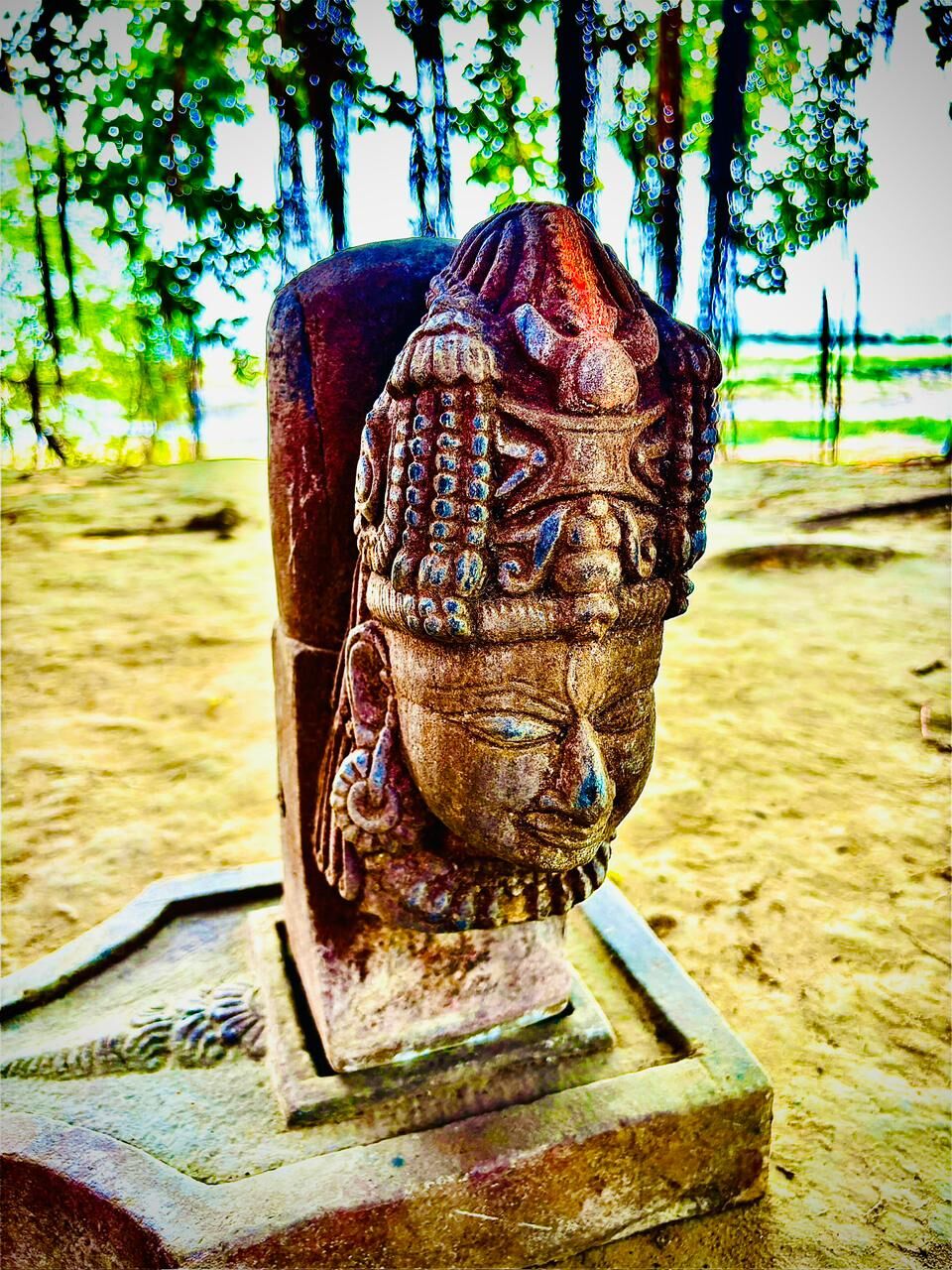Rare 1200 year old Ek Mukhi Shivling from Varanasi to be showcased at Lothal’s National Maritime Heritage Complex
Ancient Gurjar Pratihar era Shivling discovered in Chaubepur village to become the central exhibit in NMHC Gallery 5

-Anurag Tiwari for Public Khabar
The story from Varanasi rolled in almost lazily at first, like one of those small ripples on the surface of sacred Ganga that you ignore until it suddenly grows into something meaningful. A rare Ek Mukhi Shivling, nearly twelve centuries old, surfaced in Gaura Uparwar village of Chaubepur area on the river’s northern bank. And now, if things stay on track, it will soon travel to the National Maritime Heritage Complex (NJMC) in Lothal. A riverbank relic heading to a maritime museum sounds a bit odd if you say it too fast, but when you pause for a second, it strangely fits. Water routes, old cultures, pieces of faith that wandered before people wrote things down properly.
The sculpture itself feels gentle even in photographs. Sandstone carved so softly that it almost tricks your eyes. A single calm face of Shiva, with the jata crown, round earrings, the necklace, everything tucked in with patient hands. Above it sits the smooth rounded ling form. It was discovered during a cremation ritual when Professor Gyaneshwar Chaubey of BHU noticed it in a farmer’s land near creamation ground. He still talks about it with that slightly breathless tone researchers get when they know they have found something rare. He said, “This sculpture is not only evidence of the riverfront civilisation of Varanasi, it will also serve as an important clue in understanding the medieval Shaiva tradition. Its display at NMHC will give it international recognition.”
Soon after, three senior archaeologists were consulted. Dr Sachin Tiwari let his eyes rest on the sculpture with a soft smile and said, “The carving of this sculpture reflects the finest art of the Pratihara period. You can clearly see the grace of that era and the skill of local artisans.”
Dr Rakesh Tiwari added his own reading of the idol. He said, “Finding such sculptures along the Ganga suggests that there must have been an active Shaiva temple or monastery here at some point.” It is a simple sentence, but it is enough to make the mind wander through older river stories that never made it into textbooks.
Then came the part where the museum world joined in. Professor Chaubey reached out to Professor Vasant Shinde, who advises NMHC and heads its curation committee. Professor Shinde’s first reaction carried a mix of certainty and warmth, almost as if the significance of the find hit him right away. He said, “This discovery gives a new dimension to the archaeological landscape around Varanasi. The style of the sculpture and the stone itself make it clear that it is an ancient creation crafted by local artisans.”
After that he followed up with a formal note, writing, “I express my gratitude on behalf of the ministry for your generous offer. This unique sculpture will be displayed as the central object in Gallery 5 of NMHC Lothal. I will visit Chaubepur in November 2025 to complete the formalities.”
You can almost imagine him reading his own words slowly before sending them, the way someone does when they know they are taking responsibility for something truly precious.
Professor Chaubey says a scientific survey of the discovery site is being planned. He believes this will give researchers a new angle on Varanasi’s archaeological landscape. Professor Shinde has said the same thing in his own way, that the find adds a new depth to the story of the region.
Meanwhile, the National Maritime Heritage Complex under IPRCL is slowly shaping into a place that tells many kinds of journeys, not just the ones that happened on the sea. The Shivling will stand in that setting, a reminder that spiritual and cultural routes often intersected long before modern maps tried to separate them.
If all goes smoothly, the sculpture will be transferred by the end of November. After that, it will sit quietly in Gallery 5 waiting for visitors. Some people will walk past it without thinking much. Others will pause for a moment and feel the weight of a thousand years settling into a single silent object. That is the strange charm of pieces like this. They do not speak loudly, but they stay with you long after you have moved on.


